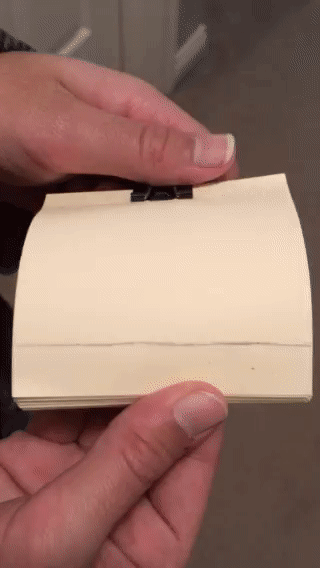Section 1.6 Zeno's paradox of the arrow: understanding motion through change
Worksheet
Objectives
- Gain an intuitive sense of how we might define the derivative of a function.
- Connect the ideas of position and velocity to the abstract idea of the derivative.
- Recognize examples of rates of change.
The third [of Zeno's paradoxes] is ... that the flying arrow is at rest, which result follows from the assumption that time is composed of moments .... he says that if everything when it occupies an equal space is at rest, and if that which is in locomotion is always in a now, the flying arrow is therefore motionless. (Aristotle, Physics, 239b30)
Zeno abolishes motion, saying "What is in motion moves neither in the place it is nor in one in which it is not". (Diogenes Laertius, Lives of Famous Philosophers, ix.72)
These are two quotes that describe one of Zeno's paradoxes (Zeno of Elea was a Greek philosopher most famous for his paradoxes) called "the arrow." In this paradox, Zeno imagines observing an arrow flying through the air and then examining the arrow in a single moment. In the moment, the arrow is not moving - it is still in the air, occupying a single space. Zeno perceives time as a knitting together of all the moments and observes that if the arrow is still in every moment, we must conclude that the arrow is motionless. But, the arrow flys through the air.
This paradox points towards a central idea in calculus - the idea of linking moments in time together to allow us to understand how things change over time. In fact, one of the ways calculus is often described is a language we use to investigate change over time. We will explore an aspect of this paradox to better understand how we define and calculate the derivative of a function.
We will examine the motion of an object by modeling it using a flipbook. What's a flipbook you ask? A flipbook is a (usually small) book that mimics how we could construct an animation. Each page is like a frame of the movie - a single image which is the snapshot in time of some motion or action. When we put all the pages in order and quickly flip through them, we have the illusion of motion. Here's a video of a flipbook of a bouncing ball in action: 
1.
Let's think about how we would make a flipbook to show the progress of Zeno's arrow from left to right. On our first card, we draw the arrow all the way to the left and then, on the second, draw it a little bit further to the right. Continue the small rightward change on each successive card until the arrow reaches the rightmost edge.
The illustration to the right shows that the first four cards of the sequence could look like.
Brainstorm in your group about different moving objects that you might want to investigate. Pick one and make sure it is easy and quick to draw.

2.
Think about your moving object over a time period of 10 seconds. On ten notecards, draw a snapshot of your object at each the 10 seconds in the period and arrange them in a flip book. Flip it a few times! Have some fun!3.
As a group, pick a time at which you want to examine the velocity of your object (e.g. at 3.37 seconds). How can you use your flip book to estimate the velocity at the time of your choice? Write down your method in as rigorously as you can.4.
How can we refine our estimate by adding more pages to our flipbook?5.
Construct and add 10 more pages to your book and recalculate your estimate. Repeat this one more time. Discuss in your group what how the visualization changes and what the effect of the extra pages has in the whole flip-movie. How is this related to the velocity of the object? What would happen if we added more and more pages? In this language, how would you define the derivative of the function describing the position of your object at the instant in time you are looking at?6.
Earlier in our course, we introduced the derivative of a function at a point.Definition 1.6.3.
The derivative of a function, \(f(x)\) at the point \(x=x_0\) is7.
How does your investigation inform your thinking about Zeno's paradox of the arrow? Does calculus help you think about a resolution to the paradox?
